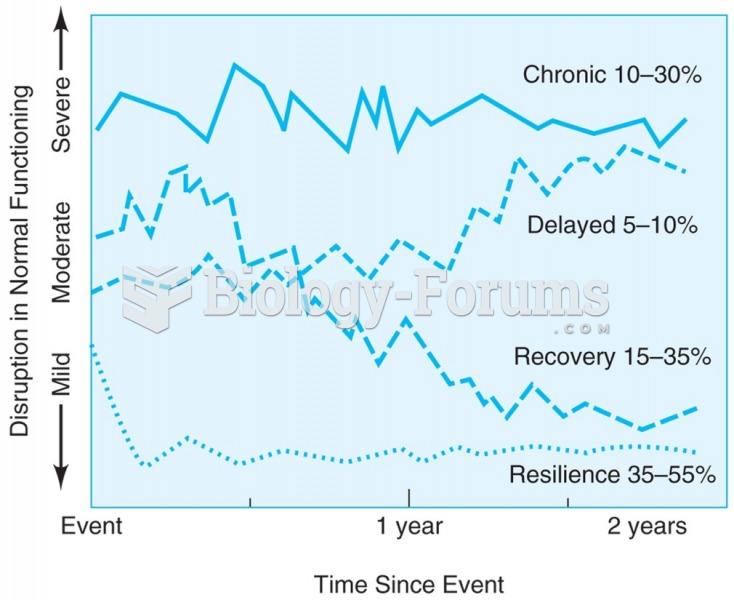|
|
|
Drugs are in development that may cure asthma and hay fever once and for all. They target leukotrienes, which are known to cause tightening of the air passages in the lungs and increase mucus productions in nasal passages.
Thyroid conditions cause a higher risk of fibromyalgia and chronic fatigue syndrome.
Glaucoma is a leading cause of blindness. As of yet, there is no cure. Everyone is at risk, and there may be no warning signs. It is six to eight times more common in African Americans than in whites. The best and most effective way to detect glaucoma is to receive a dilated eye examination.
The oldest recorded age was 122. Madame Jeanne Calment was born in France in 1875 and died in 1997. She was a vegetarian and loved olive oil, port wine, and chocolate.
Serum cholesterol testing in adults is recommended every 1 to 5 years. People with diabetes and a family history of high cholesterol should be tested even more frequently.
 Play provides these preschoolers with the ability to interact with one another, and develop their ph
Play provides these preschoolers with the ability to interact with one another, and develop their ph
 Of four outcomes people can have after exposure to trauma, the most prevalent is resilience. Others, ...
Of four outcomes people can have after exposure to trauma, the most prevalent is resilience. Others, ...
 U.S. suburbs were once unplanned, rambling affairs that took irregular shapes as people moved away ...
U.S. suburbs were once unplanned, rambling affairs that took irregular shapes as people moved away ...




